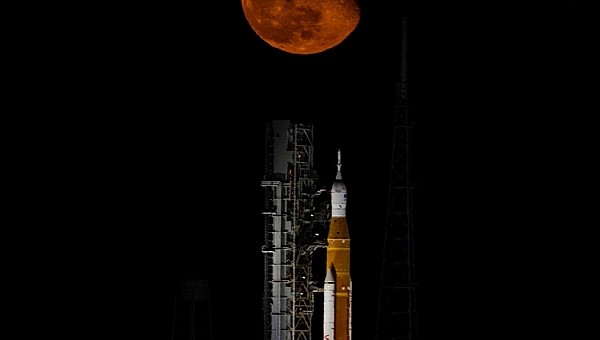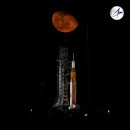After more than half a year of troubled tests and failed launch attempts, the Artemis Moon rocket finally seems determined to leave its birth planet behind and push the Orion spaceship towards Earth's satellite. At least, that’s the feeling we get looking at the updates coming from over at the Kennedy Space Center.
The last official one NASA posted on the Artemis I mission reads that “managers convened Monday afternoon to review the status of countdown operations as well as two open technical items, and gave a “go” to proceed toward launch Wednesday, Nov 16.” That pretty much means that at the time of writing, the scheduled launch (postponed from November 14 on account of Tropical Storm Nicole) is still on track.
The go-ahead comes after some tense moments and jitters on the pad there. They were caused by the discovery of caulk on a seam between an ogive on Orion’s launch abort system, which was considered a safety risk as it might detach during launch. Rocket scientists in the most literal sense looked at it though and decided there is a low chance of that happening.
Separately, “a component of an electrical connector on the hydrogen tail service mast umbilical” had to be replaced. There’s a bit of nervousness surrounding this too, with NASA saying “swapping the component did not fully fix the issue.” Still, they seem determined to push through it.
The launch window for the first mission of the Artemis program opens at 1:04 a.m. EST on November 16 (we'll cover it live here on autoevolution), and stays like that for about two hours. You can have a look at the operations breakdown for the last ten minutes prior to launch below:
The go-ahead comes after some tense moments and jitters on the pad there. They were caused by the discovery of caulk on a seam between an ogive on Orion’s launch abort system, which was considered a safety risk as it might detach during launch. Rocket scientists in the most literal sense looked at it though and decided there is a low chance of that happening.
Separately, “a component of an electrical connector on the hydrogen tail service mast umbilical” had to be replaced. There’s a bit of nervousness surrounding this too, with NASA saying “swapping the component did not fully fix the issue.” Still, they seem determined to push through it.
The launch window for the first mission of the Artemis program opens at 1:04 a.m. EST on November 16 (we'll cover it live here on autoevolution), and stays like that for about two hours. You can have a look at the operations breakdown for the last ten minutes prior to launch below:
- Ground Launch Sequencer (GLS) initiates terminal count (T-10M)
- GLS go for core stage tank pressurization (T-6M)
- Orion ascent pyros are armed (T-6M)
- Orion set to internal power (T-6M)
- Core stage LH2 terminate replenish (T-5M57S)
- GLS is go for flight termination system (FTS) arm (T-5M)
- GLS is go for LH2 high flow bleed check (T-4M40S)
- GLS is go for core stage auxiliary power unit (APU) start (T-4M)
- Core Stage APU starts (T-4M)
- Core stage LOX terminate replenish (T-4M)
- ICPS LOX terminate replenish (T-3M30S)
- GLS is go for purge sequence 4 (T-3M10S)
- ICPS switches to internal battery power (T-1M56S)
- Core stage switches to internal power (T-1M30S)
- ICPS enters terminal countdown mode (T-1M20S)
- ICPS LH2 terminate replenish (T-50S)
- GLS sends “go for automated launch sequencer” command (T-33S)
- Core stage flight computer to automated launching sequencer (T-30S)
- Hydrogen burn off igniters initiated (T-12S)
- GLS sends the command for core stage engine start (T-10S)
- RS-25 engines startup (T-6.36S)
- Booster ignition, umbilical separation, and liftoff







